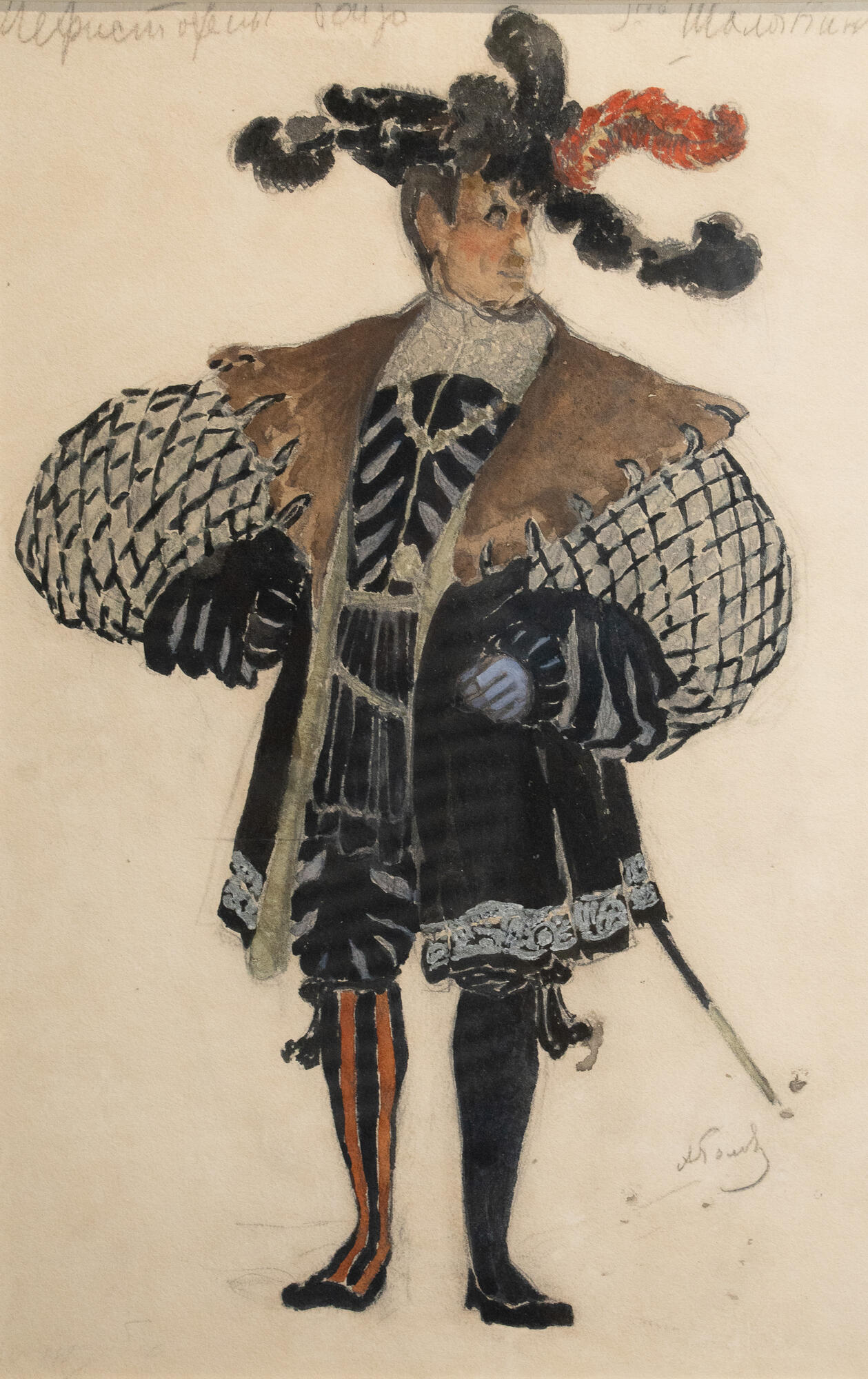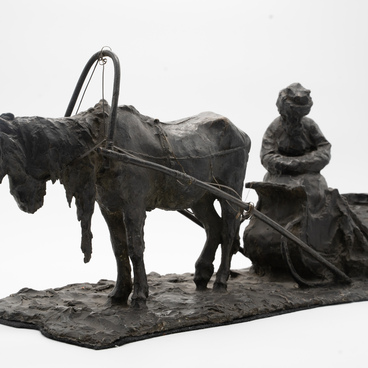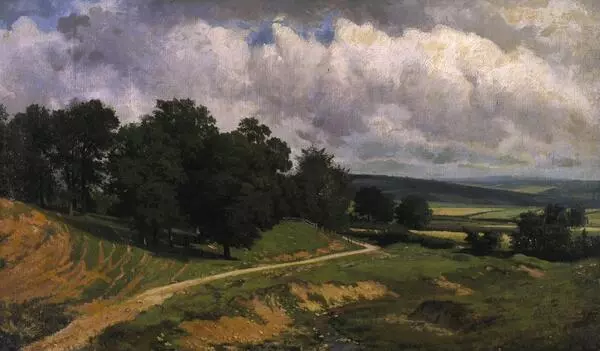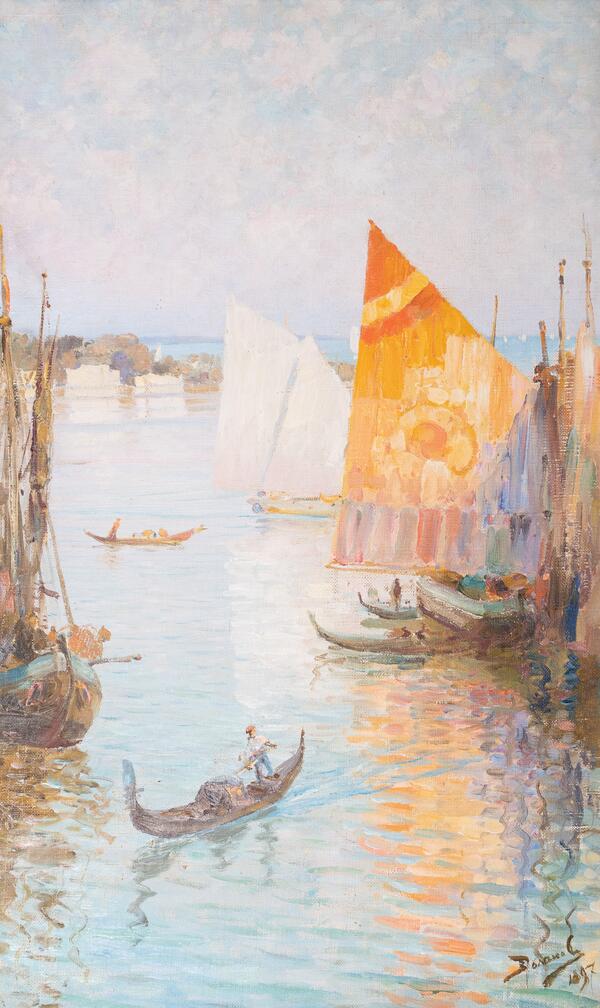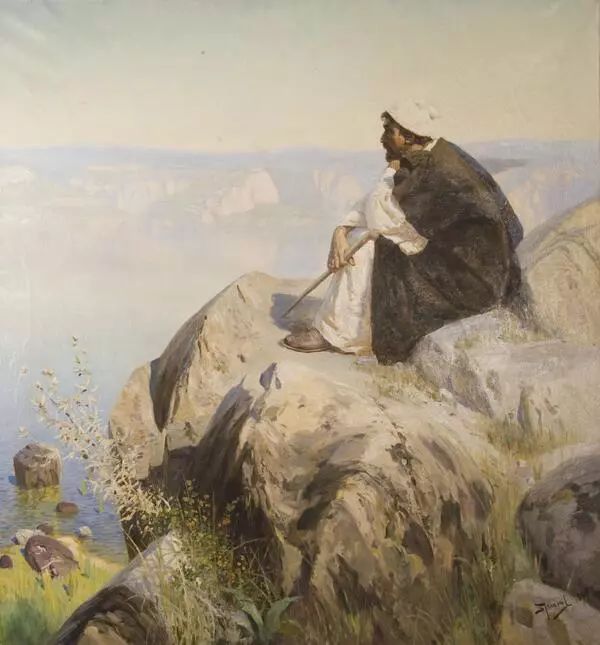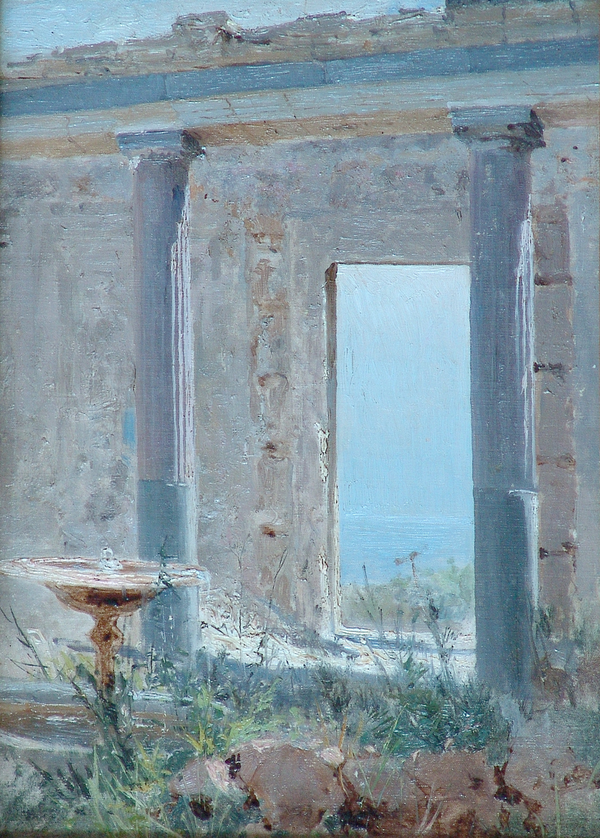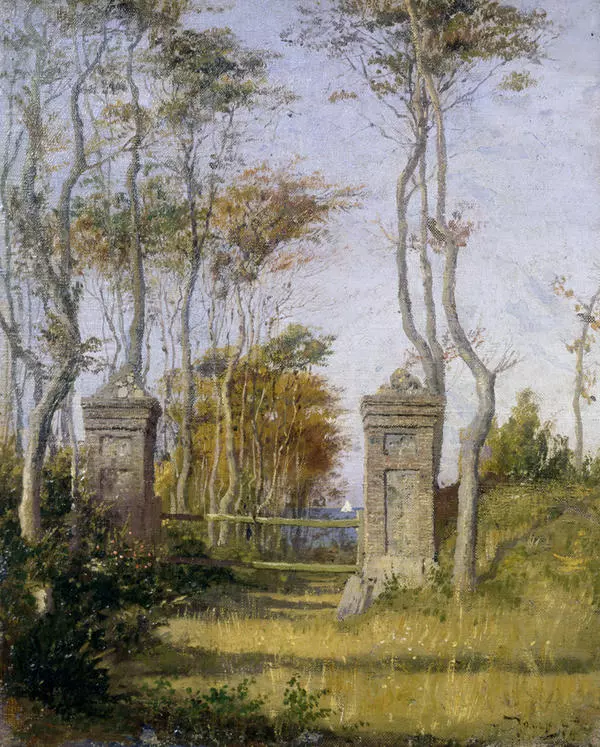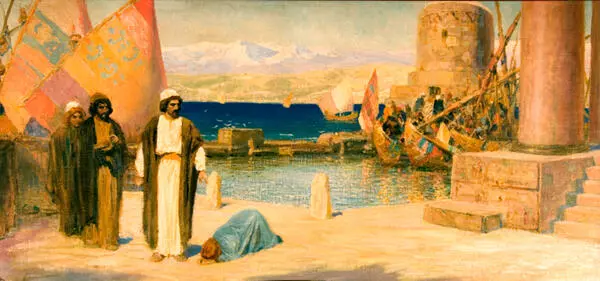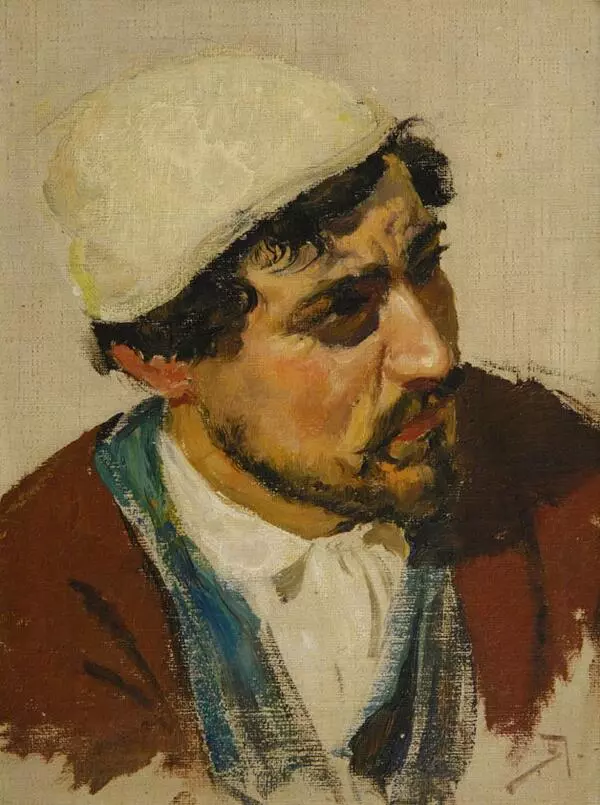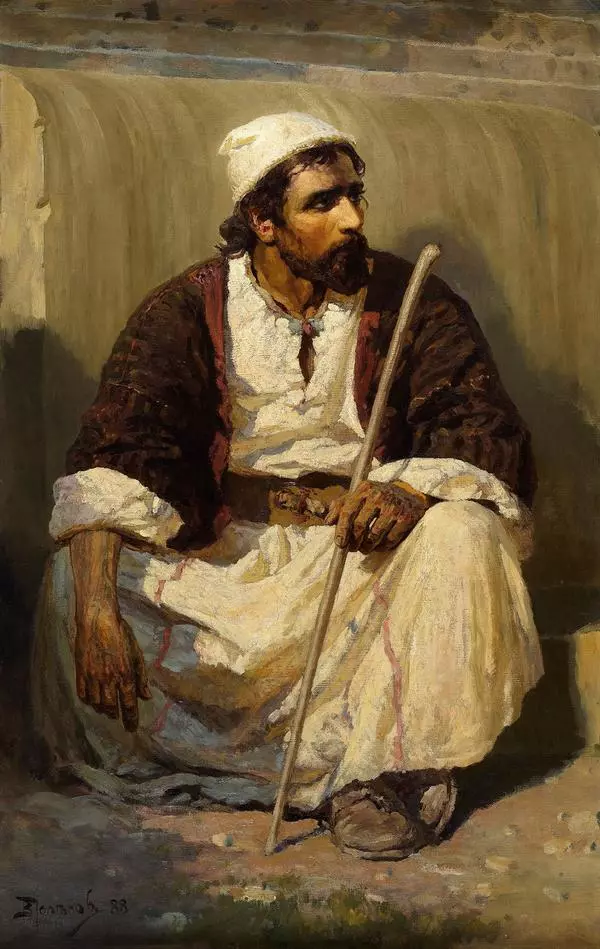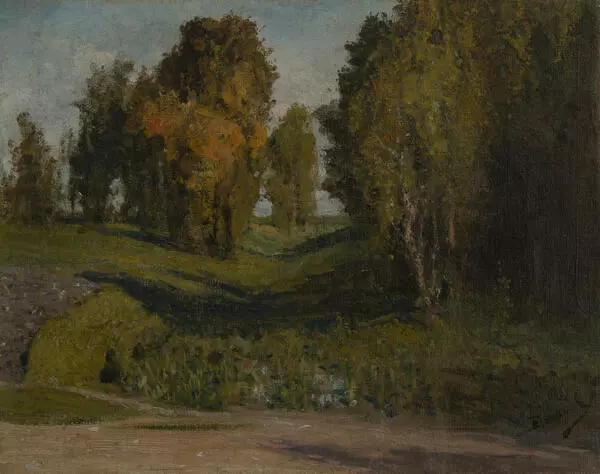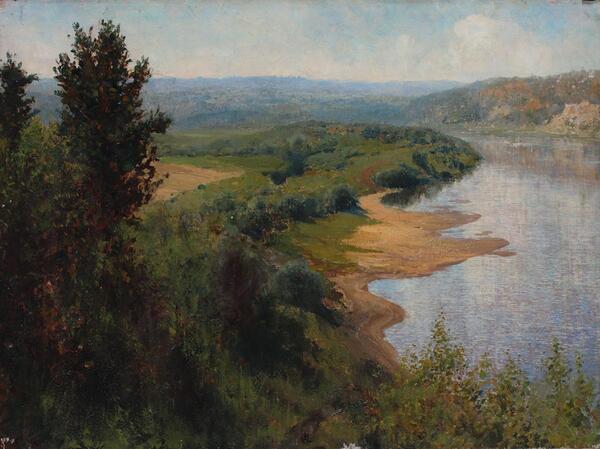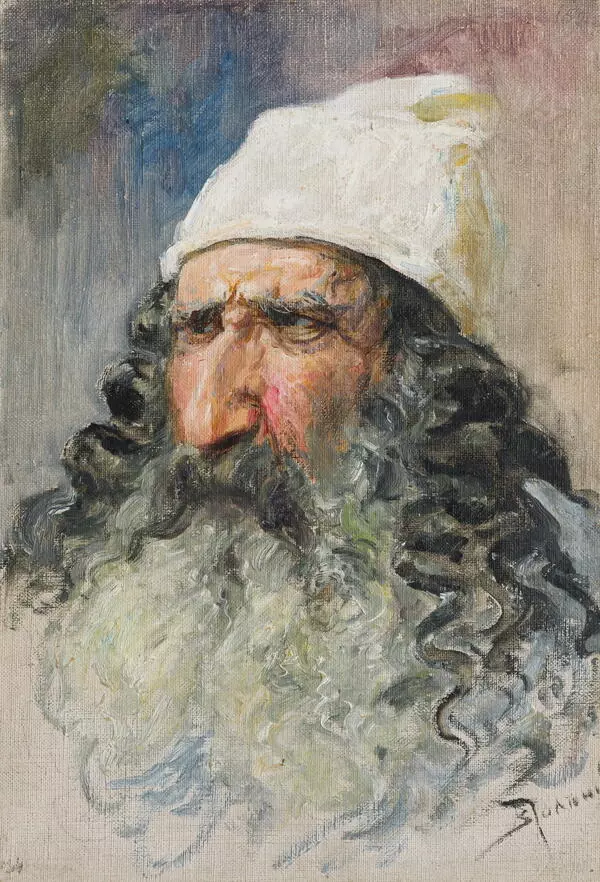Feodor Ivanovich Chaliapin was an impersonation expert. His portrayals of Ivan the Terrible, Boris Godunov, Ivan Susanin, Don Quixote, and many others have long been ranked among the greatest masterpieces of world art. Chaliapin was often assisted by Russian painters in his work on the roles.
Vasily Polenov left a significant mark in the singer’s biography. As he perfectly understood the specifics of scenic painting, he could masterfully combine the schematic drawing essential to this kind of art with plein air painting techniques. He played a great part in the productions by the Moscow Private Opera, and it was there that he met the young singer. At the time, Feodor Chaliapin left the Mariinsky Theater for Mamontov’s Private Opera and enjoyed the invaluable opportunity of bringing his own perspective into the process.
Thus, Chaliapin decided to change the traditional stage look of Mephistopheles. In his book called “Pages from My Life”, the singer described in detail this important chapter of his biography. Chaliapin recalled, “I was to sing the part of Mephistopheles in ‘Faust’. I told Mamontov that the way I performed the role of Mephistopheles up to this day was not enough for me anymore. I see this character differently, in a different costume and with different makeup, and I would like to break with tradition.” A new costume was made based on an engraving by the famous German painter Wilhelm von Kaulbach, and Chaliapin himself came up with an idea for the makeup. The tedious “chevalier” was replaced by Mephistopheles in a costume that was only half-ballet, and this new appearance determined the essence of the character. Polenov approved of the improvements but, being well-versed in the history of the European Middle Ages, he noted some discrepancies in Mephistopheles’ costume.
Polenov soon made a sketch of Mephistopheles’ costume and gave it to the singer at the next performance of “Faust”. The drawing depicts Mephistopheles in a modest costume typical of the German Middle Ages, which combines the historical accuracy of every detail with the artist’s generalization. The elongated male figure is dressed in a dark red jerkin with cuts, a short orange cloak, and light red stockings. The neck is covered with a red hooded headdress topped with a narrow feather.
One of those who witnessed the birth of this new stage image, unusual for opera, was the writer Vsevolod Mamontov, who recalled,
Vasily Polenov left a significant mark in the singer’s biography. As he perfectly understood the specifics of scenic painting, he could masterfully combine the schematic drawing essential to this kind of art with plein air painting techniques. He played a great part in the productions by the Moscow Private Opera, and it was there that he met the young singer. At the time, Feodor Chaliapin left the Mariinsky Theater for Mamontov’s Private Opera and enjoyed the invaluable opportunity of bringing his own perspective into the process.
Thus, Chaliapin decided to change the traditional stage look of Mephistopheles. In his book called “Pages from My Life”, the singer described in detail this important chapter of his biography. Chaliapin recalled, “I was to sing the part of Mephistopheles in ‘Faust’. I told Mamontov that the way I performed the role of Mephistopheles up to this day was not enough for me anymore. I see this character differently, in a different costume and with different makeup, and I would like to break with tradition.” A new costume was made based on an engraving by the famous German painter Wilhelm von Kaulbach, and Chaliapin himself came up with an idea for the makeup. The tedious “chevalier” was replaced by Mephistopheles in a costume that was only half-ballet, and this new appearance determined the essence of the character. Polenov approved of the improvements but, being well-versed in the history of the European Middle Ages, he noted some discrepancies in Mephistopheles’ costume.
Polenov soon made a sketch of Mephistopheles’ costume and gave it to the singer at the next performance of “Faust”. The drawing depicts Mephistopheles in a modest costume typical of the German Middle Ages, which combines the historical accuracy of every detail with the artist’s generalization. The elongated male figure is dressed in a dark red jerkin with cuts, a short orange cloak, and light red stockings. The neck is covered with a red hooded headdress topped with a narrow feather.
One of those who witnessed the birth of this new stage image, unusual for opera, was the writer Vsevolod Mamontov, who recalled,
